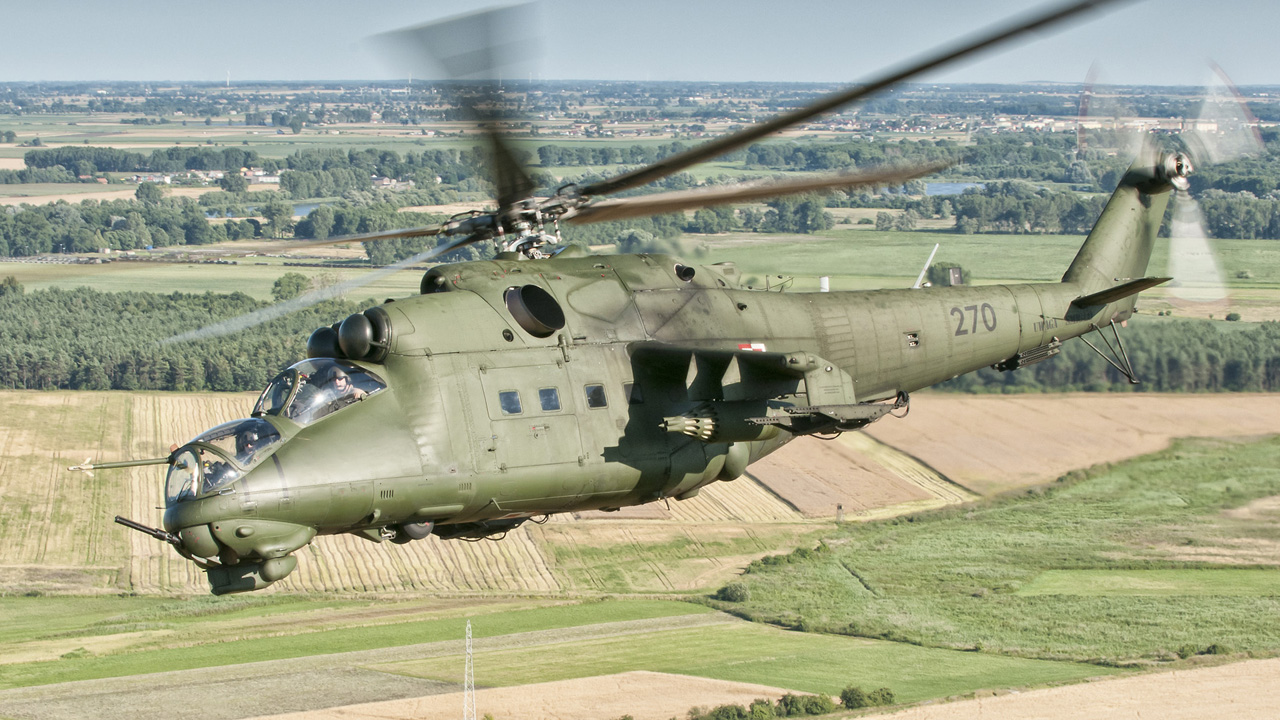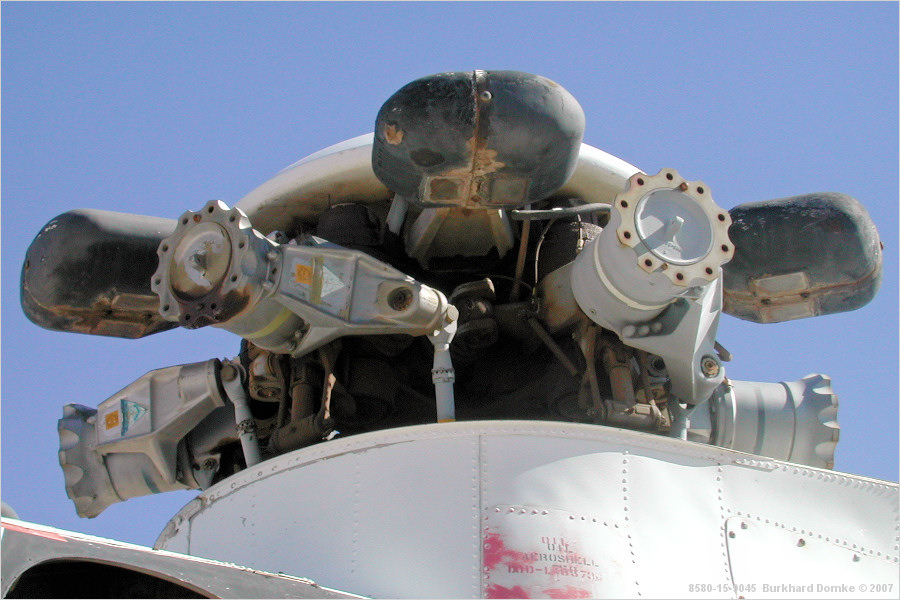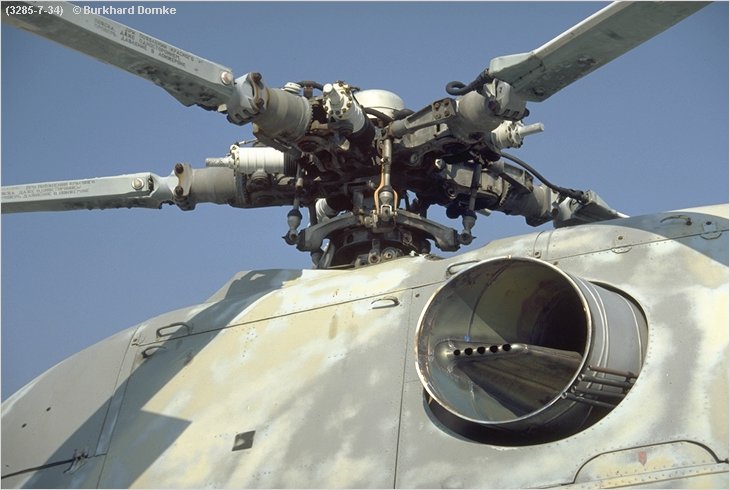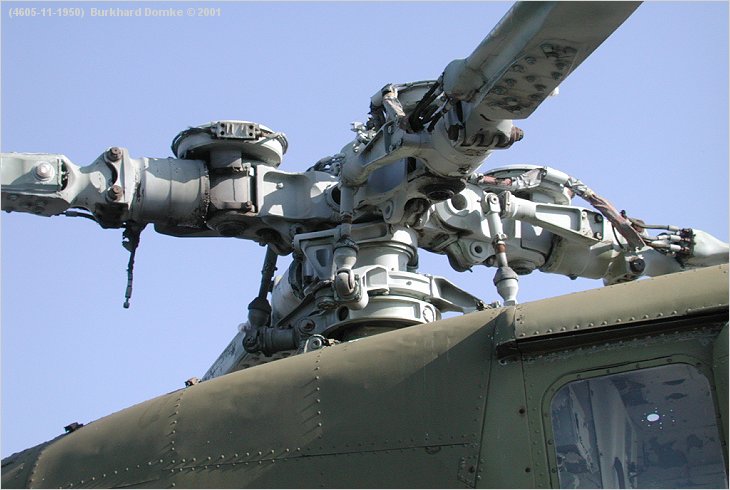
Posted on 07/08/2017 7:25:24 AM PDT by sukhoi-30mki

During large-scale exercises in Russia's southern military district, some of the country's most advanced versions of the iconic Hind attack helicopter showed off their true multi-role capabilities—which includes going from close air support platform to troop transport seamlessly.
The video below shows a Mi-35M, which is upgraded in almost every way compared to earlier Hind variants, including a modern "glass" cockpit with night vision goggle compatibility. This, along with upgraded sensors, makes the Mi-35M especially well suited for nighttime operations. Upgraded engines, rotors and transmissions also give the helicopter increased performance in nearly every category and especially in "hot and high" environments.
Like pretty much all Hinds, the Mi-35 retains its small passenger compartment, which is capable of lugging around up to eight fully equipped troops, or four stretchers. This allows the Hind to deliver small units to forward areas on the battlefield, and to immediately provide overwatch and close air support for those troops once they have disembarked. The helicopter can also exfiltrate those troops back out of the combat zone or work as a medevac platform in a pinch. Even quickly transporting supplies, such as small arms ammunition, to the front is within the Hind's repertoire.
Having a cabin is really an awesome and unique capability for an attack helicopter, especially in an age when such a premium is put on utilizing small special operations teams to achieve large effects on the battlefield.
Check out the hind's transport capabilities in action:
The Mi-35's human transport capability has even been extrapolated into what has to be the most exotic VIP transport helicopter in the world—the Mi-35MS. This shadowy and de-armed Hind derivative is thought to work as a continuity of government aircraft of sorts, whisking top MoD and Kremlin leaders from their high-profile Moscow strongholds off to hardened bunkers while still allowing them to maintain connectivity with their forces during a national emergency. During less dire times, the small Mi-35MS fleet likely works as a military VIP taxi, used by Defense Minister Shoigu and other top military officials. Putin still prefers his far roomier Mi-8MTVs.
The special mission helicopter is outfitted with a defensive countermeasures suite, radar, and an elaborate communications system, which includes a Raduga-MB satellite communications installation.

CHORTOS/WIKICOMMONS
Mi-35MS seen over Moscow.
The closest thing the US has to a gunship with some transport capability is a concept that leverages a transport helicopter design and adapts it into a gunship, and not the other way around. The 160th Special Operations Air Regiment (SOAR), better known as the Night Stalkers, have a small fleet of highly customized MH-60 Direct Action Penetrator (DAP) gunships that have been adapted from the stock H-60L Black Hawk design. But the cabin is usually stuffed with ammunition magazines and a large external fuel tank, so it is uncertain if it could lug even a small team of troops into combat, but it is unlikely. Usually a standard special operations modified MH-60 would just carry the force alongside the DAP.
Maybe the USMC's UH-1Y Venom could be compared to the Mi-35, but once again, it is a utility helicopter that has evolved into a transport-gunship over time.

US ARMY
MH-60L DAP
Regardless of its potential analogues, the Mi-24 family still offers a ton of functionality nearly 50 years after it first flew—a testament to the ingenuity of the design team at Mil that made the still-feared attack chopper a reality.
Contact the author: Tyler@thedrive.com
Looks like it needs a bigger door. Must be claustrophobic if you’re the man tucked in the back.
I’m totally crazy about the hind but that photo has been altered, I suspect the dismounts weren’t actually there in that photo.
Notice that for the photo to be real the sun has to be in two different locations.
also usually when you try to make equipment that can pinch-hit between two different roles you get you end up with crap.
The Hind is a weird exception to this.
They aren’t so tough. I once saw Patrick Swayze shoot one clean out of the sky with a recurve and a grenade-tip wood arrow.
IIRC, the Hind was based on engines,transmission and rotor head of the MIL-8, itself a copy of the Sikorsky SH-3.
In 1969, Sikorsky proposed an attack helo built on the SH-3 platform. They called it the Blackhawk. Sometime later the Soviets revealed the MIL-24 Hind. Draw your own conclusions.
Sikorsky SH-3 (the VH-3 is the Presidential "White Top" version)

MIL-8

Sikorsky S-67 Blackhawk

MI-24 "Hind"

It was proposed for the attack mission, where it could carry 7,000 pounds of arms and ammunition. It could use existing weapons, such as the turret-mounted 7.62 gun, 20- and 30-millimeter cannon, the 40-millimeter grenade launcher, and wing mounted rocket and TOW missile pods.
For search and rescue missions it could fly 600 miles at high speed, using auxiliary fuel tanks mounted on the wing. It could be used for observation/surveillance, carrying sophisticated electronic equipment to detect and record the emplacement and movement of enemy installations. With cabin modification it could transport as many as six armed troops at 165 miles an hour over distances up to 220 miles. And it could be used to transport external loads weighing as much as three and one half tons.
The aircraft flew from 1970 to 1974. Pilots reported that it was very smooth and responsive. It was very maneuverable, and performed loops, rolls and split-S maneuvers during numerous flight demonstration. 
Sorry, I left off the reference link for the S-67 Blackhawk information.
http://www.sikorskyarchives.com/S-67%20BLACKHAWK.php
The Mi-8 is based on the earlier Mi-4 - in fact, it’s an updated Mi-4 with a larger cabin and turbines instead of a piston engine. The Soviets stole a lot of US tech designs, but this wasn’t one of them.
It’s more a case of function dictating form and parallel development. Otherwise, we would have to say the F-15 is a copy of the MiG-25 when it isn’t.
Also, first flight of the Hind was in September 1969 - the Sikorsky concept attack copter concept was only a proposal at the time and didn’t fly until the following year.
And that is why you have the job you have heh heh

As awesome as that crew rescue pic is, the Apache still can’t carry 8 fully armed infantry in an enclosed bay. The Russian equivalent of the Apache was designed with the pictured kind of rescue in mind and has a mini cabin that can take three people in a buddy rescue situation. The Russians weren’t interested in leaving downed air crew behind to the ‘tender mercies’ of the enemy, I.e., being on the receiving end of what their North Vietnamese did to downed US hell pilots.
Again - brave and neat, but please show me where the Apache has an armored passenger compartment capable of carrying 8 Special Forces or Marines while still being able to lift its regular combat load. That’s the unique thing about the Hind.
I think the Hind is a case of noticing that a design had leftover capability and the designers just decided to use it, i.e, the helicopter had to be a certain size to accomplish its design goals with the technology they had on hand, so the designers realized that might as well add a troop compartment as it would essentially be a ‘free’ enhancement.
To be scrupulously fair, the 8 passenger cabin on the Hind is on the cramped side for a transport helicopter - a Western 8 passenger cabin would be much larger and more spacious.
The Sikorsky S-67 was a further development of the S-66 program begun in 1964
http://www.sikorskyarchives.com/S-66%20AAFSS.php
The Mil-4 (1952) was a copy of the Sikorsky H-19 (1949)
https://en.wikipedia.org/wiki/Mil_Mi-4
“The Mi-4 was designed in response to the American H-19 Chickasaw and the deployment of U.S. helicopters during the Korean War. While the Mi-4 superficially resembles the H-19 Chickasaw, it is a larger helicopter and is able to lift more weight.”
The H-19, H-34 and Mil-4 all had radial piston engines located in the nose below the pilots and driving the rotors via a diagonal driveshaft.
The SH-3/S-61 & the Mil-8 have turboshaft engines above the cockpit with a driveshaft heading straight back to the main transmission & rotorhead.
The SH-3/S-91 first flew in March 1959.
The MIL-8 first flew in July 1961.

Five-blade fully-articulated and oil-lubricated main rotor with all-steel head.
Mi-8 Hip rotorhead:

Five-blade fully articulated main rotor, forged and machined steel hub. Hydraulic lead-lag dampers.
Those don't look like copies of each other to me. In fact they look quite different.
The Mi-4 resembles an H-19 but is larger. "Built in response to the H-19" does not mean it's a copy - any more than the F-15 is a copy of the MiG-25 Foxbat, even though they look similar.
H-19 rotorhead:

Three-blade fully articulated main rotor.
Mi-4 rotorhead:

Four-blade fully articulated main rotor.
Not a lot of similarity there either.

Please note the twin turboshaft engines, transmission and rotorhead on top of the fuselage. It seems the Russians stole the SH-3 powertrain design before Sikorsky had even begun designing it!
Disclaimer: Opinions posted on Free Republic are those of the individual posters and do not necessarily represent the opinion of Free Republic or its management. All materials posted herein are protected by copyright law and the exemption for fair use of copyrighted works.